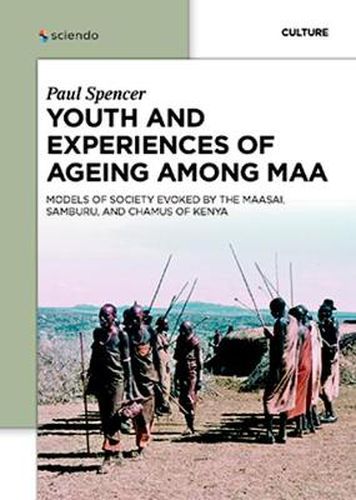Readings Newsletter
Become a Readings Member to make your shopping experience even easier.
Sign in or sign up for free!
You’re not far away from qualifying for FREE standard shipping within Australia
You’ve qualified for FREE standard shipping within Australia
The cart is loading…






This title is printed to order. This book may have been self-published. If so, we cannot guarantee the quality of the content. In the main most books will have gone through the editing process however some may not. We therefore suggest that you be aware of this before ordering this book. If in doubt check either the author or publisher’s details as we are unable to accept any returns unless they are faulty. Please contact us if you have any questions.
The Maa of East Africa are a cluster of related pastoral peoples who share a social organization based on age. This groups men into life-long cohorts from their initiation in youth, regardless of family wealth. Historically, this type of pre-market society has been described in every continent, but East Africa provides the principal surviving region of age-based societies, among whom the Maasai are the best known. In this volume, comparison between three branches of Maa highlights different aspects of their society: the dynamics of power with age and gender among the Maasai, of ritual performance and belief among the Samburu, and of historical change among the Chamus.
Here it is argued that understanding another culture can only be approached through models derived in the first instance from the representations conveyed by members of that culture. The social anthropologist may then elaborate these images through the choice of analytical parallels, even extending to other disciplines and personal experience. Each chapter in this volume views Maa institutions through a different lens, exploring models relevant to a comprehensive analysis of their social life.
$9.00 standard shipping within Australia
FREE standard shipping within Australia for orders over $100.00
Express & International shipping calculated at checkout
This title is printed to order. This book may have been self-published. If so, we cannot guarantee the quality of the content. In the main most books will have gone through the editing process however some may not. We therefore suggest that you be aware of this before ordering this book. If in doubt check either the author or publisher’s details as we are unable to accept any returns unless they are faulty. Please contact us if you have any questions.
The Maa of East Africa are a cluster of related pastoral peoples who share a social organization based on age. This groups men into life-long cohorts from their initiation in youth, regardless of family wealth. Historically, this type of pre-market society has been described in every continent, but East Africa provides the principal surviving region of age-based societies, among whom the Maasai are the best known. In this volume, comparison between three branches of Maa highlights different aspects of their society: the dynamics of power with age and gender among the Maasai, of ritual performance and belief among the Samburu, and of historical change among the Chamus.
Here it is argued that understanding another culture can only be approached through models derived in the first instance from the representations conveyed by members of that culture. The social anthropologist may then elaborate these images through the choice of analytical parallels, even extending to other disciplines and personal experience. Each chapter in this volume views Maa institutions through a different lens, exploring models relevant to a comprehensive analysis of their social life.